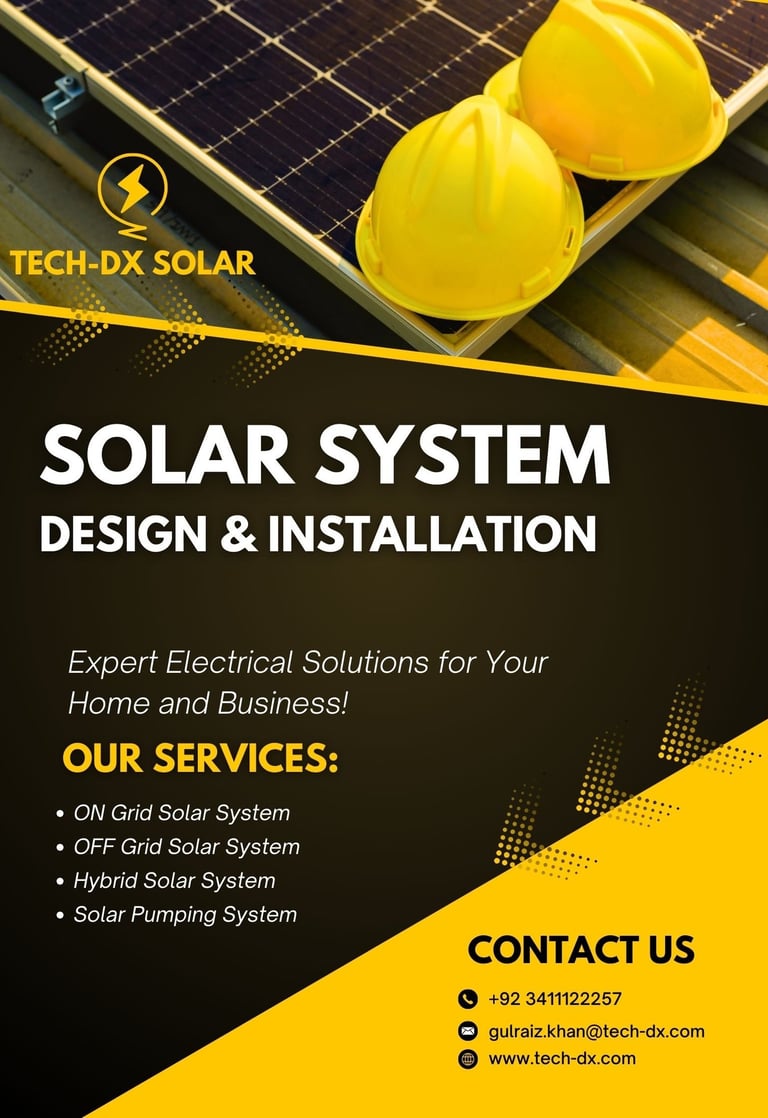Tech-Dx Solar
Our services
Initial Consultation: Discussing your energy needs, goals, and property details.
Electrical Engineering Design: Planning the electrical connections, grounding, and safety measures.
Mounting System Installation: Securely installing the racking or framework for the solar panels (roof mounts, ground mounts, etc.).
Installation of Monitoring Systems: Setting up software or hardware that allows you to track your system's energy production and performance.


OFF Grid Solar System
Hybrid Solar System
A hybrid solar system design integrates multiple energy sources to optimize efficiency and reliability in power generation. This approach typically combines solar photovoltaic (PV) panels with other forms of renewable energy, such as wind turbines or biomass, alongside traditional energy sources like natural gas or diesel generators. The versatility of a hybrid system allows for energy production even when solar conditions are suboptimal, ensuring a steady supply of electricity. Additionally, advancements in energy storage technology, such as batteries, enhance the system's capability to store excess energy generated during peak sunlight hours for use during cloudy periods or at night. By carefully designing the system to meet the specific energy needs of a location, users can reduce their carbon footprint while benefiting from lower energy costs and increased energy independence. Overall, hybrid solar system design is a forward-thinking solution that supports a sustainable energy future.
ON Grid Solar System
Designing an on-grid solar system involves carefully assessing a property's energy needs and available sunlight. This renewable energy system connects directly to the utility grid, allowing for seamless energy exchange. The design process starts with determining the optimal solar panel placement to maximize exposure to sunlight throughout the day. Factors such as roof orientation, shading from nearby structures, and local weather conditions are critical in this evaluation. Next, the inverter selection is essential, as it converts the direct current generated by the solar panels into alternating current usable by household appliances. Proper sizing of the system is also crucial to ensure it meets energy demands without excessive surplus or deficiency. Finally, integrating monitoring solutions helps track energy production and consumption, making it easier to optimize performance and savings over time. With the right design, an on-grid solar system can significantly reduce electricity bills and promote sustainable living.
